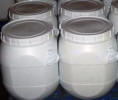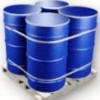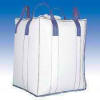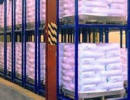| Anmol Chemicals is the pioneer manufacturers of Magnesium Trisilicate, Pharmaceutical Excipients Fragrance & Flavor chemicals in India. We offer Halal and Kosher Magnesium Trisilicate made in an ISO9001, ISO22000 (FSSC22000) cGMP and GLP certified facility. Our group has several manufacturing facilities spread across the world, supported by toll manufacturers and representatives in UAE, Europe, Africa, USA, China and has several associated manufacturing facilities spread across India. All the Information on Physics, Chemistry, Applications, Uses and Technology on Manufacture of Magnesium Trisilicate is in these pages. |
| The units have one or more of the certifications like FDA GMP, ISO 9001, ISO 22000, HACCP, REACH, Kosher & Halal |
Magnesium Trisilicate BP USP & Commercial Pure AR LR ACS Analytical Reagent FCC Food Grade Manufacturers
Magnesium Trisilicate SDS GHS, MSDS Sheet
Magnesium Trisilicate CAS Number 14987-04-3 or (39365-87-2 for hydrate), EINECS EC Number 239-076-7, HS Code ---**; Molecular Weight 260.86, Molecular Formula: Mg2O8Si3
Magnesium Trisilicate BP Ph Eur Grade
DEFINITION
It has a variable composition corresponding approximately to
Mg2Si3O8,xH2O.
Content:
— magnesium oxide: minimum 29.0 per cent (ignited substance),
— silicon dioxide: minimum 65.0 per cent (ignited substance).
CHARACTERS
Appearance: White or almost white powder.
Solubility: Practically insoluble in water and in ethanol
(96 per cent).
IDENTIFICATION
A. 10.25 g gives the reaction of silicates.
B. 1 ml of solution S (see Tests) neutralized with dilute sodium
hydroxide solution gives the reaction of magnesium.
TESTS
Solution S: To 2.0 g add a mixture of 4 ml of nitric acid
and 4 ml of distilled water. Heat to boiling with frequent
shaking. Add 12 ml of distilled water and allow to cool. Filter
or centrifuge to obtain a clear solution and dilute to 20 ml
with distilled water.
Alkalinity: To 10.0 g in a 200 ml conical flask, add
100.0 g of water and heat on a water-bath for 30 min. Allow to
cool and make up to the initial mass with water R. Allow to
stand and filter or centrifuge until a clear liquid is obtained.
To 10 ml of this liquid add 0.1 ml of phenolphthalein solution.
Not more than 1.0 ml of 0.1 M hydrochloric acid is required to
change the colour of the indicator.
Water-soluble salts: Maximum 1.5 per cent. In a platinum
dish, evaporate to dryness on a water-bath 20.0 ml of the liquid
obtained in the test for alkalinity. The residue, ignited to
constant mass at 900 ± 50 °C, weighs a maximum of 30 mg.
Chlorides: Maximum 500 ppm.
Sulphates: Maximum 0.5 per cent.
Arsenic: Maximum 4 ppm, determined on 2.5 ml of solution
S.
Heavy metals: Maximum 40 ppm.
Loss on ignition: 17 per cent to 34 per cent, determined
on 0.5 g by ignition to constant mass at 900 ± 50 °C in a
platinum crucible.
Acid-absorbing capacity: Suspend 0.25 g in 0.1 M
hydrochloric acid , dilute to 100.0 ml with the same acid and
allow to stand for 2 h in a water-bath at 37 ± 0.5 °C, with
frequent shaking. Allow to cool. To 20.0 ml of the supernatant
solution add 0.1 ml of bromophenol blue solution and titrate
with 0.1 M sodium hydroxide until a blue colour is obtained. The
acid-absorbing capacity is not less than 100.0 ml of 0.1 M
hydrochloric acid per gram.
Magnesium Trisilicate USP Grade
2MgO3SiO2xH2O -- (anhydrous) 260.86
Silicic acid (H4Si3O8), magnesium salt (1:2), hydrate.
Magnesium silicate hydrate (Mg2Si3O8xH2O) [39365-87-2].
Anhydrous [14987-04-3].
Magnesium Trisilicate is a compound of Magnesium Oxide and silicon dioxide with varying proportions of water. It contains not less than 20.0 percent of magnesium oxide (MgO) and not less than 45.0 percent of silicon dioxide (SiO2).
Identification—
A: Mix about 500 mg with 10 mL of 3 N hydrochloric acid, filter,
and neutralize the filtrate to litmus paper with 6 N ammonium
hydroxide: the neutralized filtrate responds to the tests for
Magnesium.
B: Prepare a bead by fusing a few crystals of sodium ammonium
phosphate on a platinum loop in the flame of a Bunsen burner.
Place the hot, transparent bead in contact with Magnesium
Trisilicate, and again fuse: silica floats about in the bead,
producing, upon cooling, an opaque bead with a web-like
structure.
Water: Weigh accurately about 1 g in a tared platinum
crucible provided with a cover. Gradually apply heat to the
crucible at first, then strongly ignite to constant weight: it
loses between 17.0% and 34.0% of its weight.
Soluble salts: Boil 10.0 g with 150 mL of water for 15
minutes. Cool to room temperature, allow the mixture to stand
for 15 minutes, filter with the aid of suction, transfer the
filtrate to a 200-mL volumetric flask, dilute with water to
volume, and mix. Evaporate 50.0 mL of this solution,
representing 2.5 g of the Trisilicate, in a tared platinum dish
to dryness, and ignite gently to constant weight: the weight of
the residue does not exceed 38.0 mg (1.5%).
Chloride: A 20-mL portion of the diluted filtrate
prepared in the test for Soluble salts, representing 1 g of
Magnesium Trisilicate, shows no more chloride than corresponds
to 0.75 mL of 0.020 N hydrochloric acid (0.055%).
Sulfate: Treat the residue obtained in the test for
Soluble salts with 2 mL of hydrofluoric acid, and evaporate on a
steam bath to dryness. Mix the residue with water, transfer to a
filter, and wash, using approximately 50 mL of water for the
complete procedure. Heat the filtrate to boiling, and add 0.1 mL
of hydrochloric acid and 5 mL of barium chloride TS. Maintain
the mixture near its boiling point for 1 hour, filter, wash the
precipitate thoroughly with water, dry, and ignite to constant
weight: the weight of the residue does not exceed 30 mg (0.5%).
Free alkali: Add 2 drops of phenolphthalein TS to 20 mL
of the diluted filtrate prepared in the test for Soluble salts,
representing 1 g of the Trisilicate: if a pink color is
produced, not more than 1.0 mL of 0.10 N hydrochloric acid is
required to discharge it.
Arsenic: 8 ppm.
Heavy metals: the limit is 0.003%.
Acid-consuming capacity: Weigh accurately about 200 mg
into a glass-stoppered, 125-mL conical flask. Add 30.0 mL of 0.1
N hydrochloric acid VS and 20.0 mL of water. Place the flask in
a bath maintained at 37 , and shake the mixture occasionally
during a period of 4 hours but leave the mixture undisturbed
during the last 15 minutes of the heating period. Cool to room
temperature. To 25.0 mL of the supernatant add methyl red TS,
and titrate the excess acid with 0.1 N sodium hydroxide VS. One
g of Magnesium Trisilicate, calculated on the anhydrous basis,
consumes not less than 140 mL and not more than 160 mL of 0.10 N
hydrochloric acid.
Ratio of SiO2 to MgO: between 2.10 and 2.37.
Magnesium Silicate FCC Food Grade
Synthetic Magnesium Silicate
INS: 553(i) CAS: [1343-88-0]
DESCRIPTION
Magnesium Silicate occurs as a very fine, white powder free from
grittiness. It is a synthetic, usually amorphous form of
magnesium silicate in which the molar ratio of magnesium oxide (MgO)
to silicon dioxide (SiO2) is approximately 2:5. It is insoluble
in water and in alcohol, but is readily decomposed by mineral
acids. The pH of a 1:10 slurry is between 7.0 and 10.8.
Function: Anti-caking agent; filter aid.
REQUIREMENTS
Identification:
A. Mix about 500 mg of sample with 10 mL of 2.7 N hydrochloric
acid, filter, and neutralize the filtrate to litmus paper with 6
N ammonium hydroxide. The neutralized filtrate gives positive
tests for Magnesium.
B. Prepare a bead by fusing a few crystals of sodium ammonium
phosphate on a platinum loop in the flame of a Bunsen burner.
Place the hot, transparent bead in contact with a sample, and
again fuse. Silica floats about in the bead, producing, upon
cooling, an opaque bead with a web-like structure.
Assay: Not less than 15.0% of MgO and not less than 67.0%
of SiO2, calculated on the ignited basis.
Fluoride: Not more than 10 mg/kg.
Free Alkali (as NaOH): Not more than 1%.
Lead: Not more than 5 mg/kg.
Loss on Drying and Loss on Ignition: Not more than the
percentage stated or within the range claimed by the vendor.
Soluble Salts: Not more than 3.0%.
For Original Monographs of IP Indian Pharmacopoeia BP British Pharmacopoeia USP US Pharmacopoeia FCC Food Grade product, please check with the respective web-pages or books.
Manufacturers
Anmol Chemicals
S-8, SARIFA MANSION, 2ND FLANK ROAD, CHINCHBUNDER, MUMBAI 400009, INDIA
TEL: (OFFICE) 91-22-23770100, 23726950, 23774610, 23723564. FAX: 91-22-23728264
e-mail: anmolc@mtnl.net.in

Exports to USA, Canada, UAE, Dubai, South Africa, Tanzania, Kenya, Nigeria, Egypt, Uganda, Turkey, Mexico, Brazil, Chile, Argentina, Europe Netherlands, Italy, Spain, Germany, Portugal, France, Malaysia, Indonesia, Thailand, Korea, Japan, etc.
Copyright and Usual Disclaimer is Applicable. 17 May, 2021



